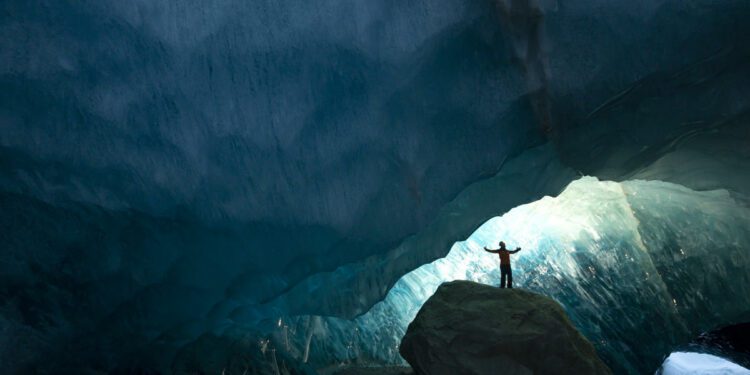PK Visual Journeys via Getty Images
2. Carlsbad Caverns, New Mexico
Why Visit: Nestled low in the high Guadalupe Mountains, Carlsbad Caverns National Park contains more than 119 caves formed by sulfuric acid dissolution, a rare process that creates unique formations.
Highlights: The Big Room, a massive chamber equivalent to 14 football fields, is filled with impressive stalactites, stalagmites, and other formations. Don’t miss the evening bat flight, where thousands of Brazilian free-tailed bats emerge from the cave at sunset.
Interesting Fact: Carlsbad Caverns’ Big Room is the largest accessible cave chamber in North America, providing a vast underground expanse for visitors to explore.
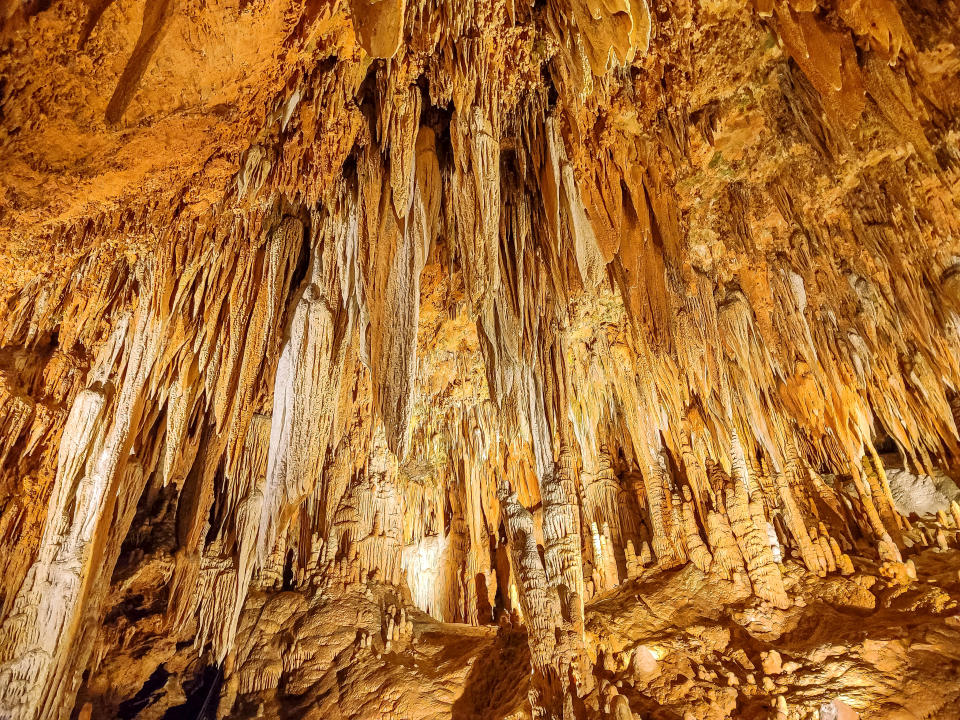
Tony_Bendele via Getty Images
3. Luray Caverns, Virginia
Why Visit: Luray Caverns, located in the pretty Shenandoah Valley, is the largest cavern in the eastern United States. The caverns are renowned for their fabulous crystal-clear pools and intricate stone formations—and they’re also well-loved for being incredibly well-lit and paved.
Highlights: The Great Stalacpipe Organ, a unique musical instrument that produces tones by tapping stalactites of different sizes, is a must-see. The Dream Lake and the Saracen’s Tent are also popular features.
Interesting Fact: The Great Stalacpipe Organ, created in 1954, is the world’s largest musical instrument. It can be heard throughout the caverns.
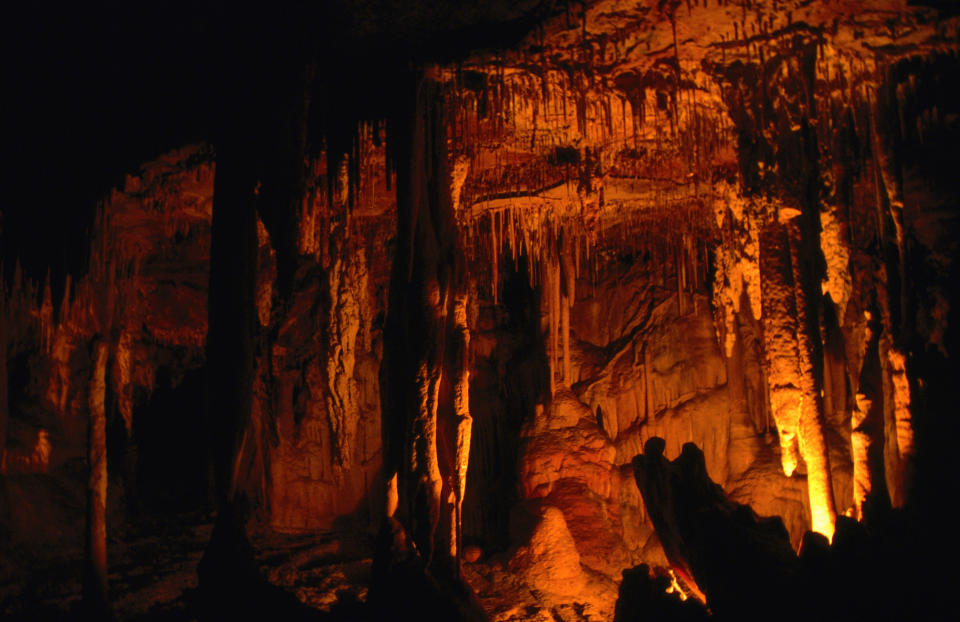
Mark Newman via Getty Images
4. Lehman Caves, Nevada
Why Visit: Located in Great Basin National Park, Lehman Caves offer an intimate cave experience with guided tours through beautifully “decorated” rooms. At Great Basin, you can also explore mountains and desert, and experience some of the country’s best stargazing—this park has a lot going for it.
Highlights: The Gothic Palace and the Lodge Room are adorned with rare shield formations, and the intricate Parachute Shield is a visitor favorite.
Interesting Fact: Lehman Caves were discovered in the 1880s by Absalom Lehman, a local miner, and have been a popular tourist attraction ever since.
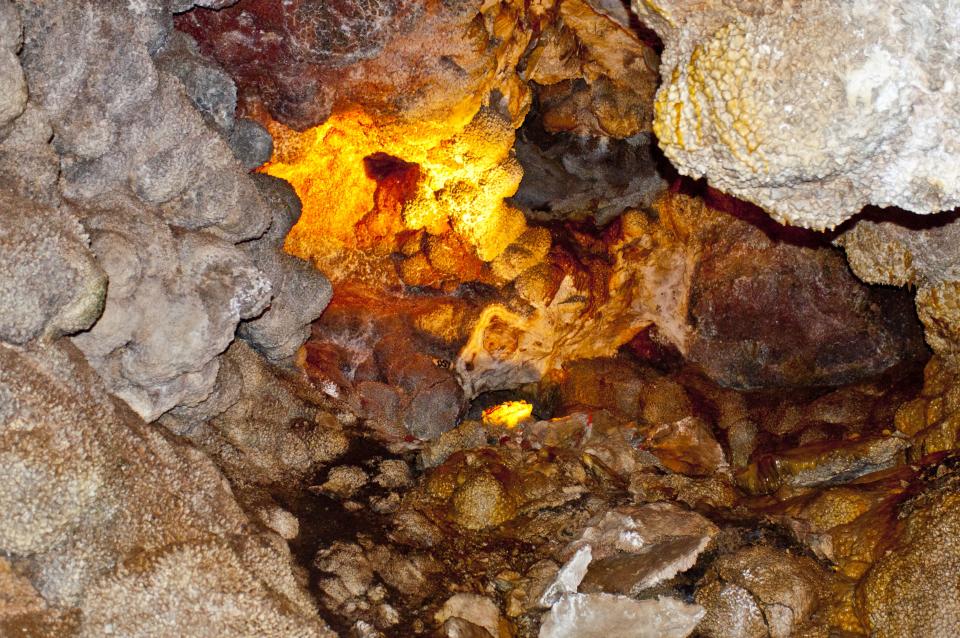
Bernard Friel/UIG via Getty Images
5. Jewel Cave, South Dakota
Why Visit: Located near Wind Cave National Park, Jewel Cave is the third-longest cave in the world, with over 200 miles of mapped passageways. Its name derives from the fabulous sparkling calcite crystals that adorn its walls. This writer’s opinion: Jewel Cave is better than Wind Cave—at least in the underground bits.
Highlights: The Scenic Tour is a popular option, featuring the dazzling crystalline formations and the vast chambers of the cave. For the more adventurous, the Historic Lantern Tour offers a glimpse into the early exploration days of the cave.
Interesting Fact: Jewel Cave was discovered in 1900 by local prospectors Frank and Albert Michaud, who noticed a small hole blowing cold air.
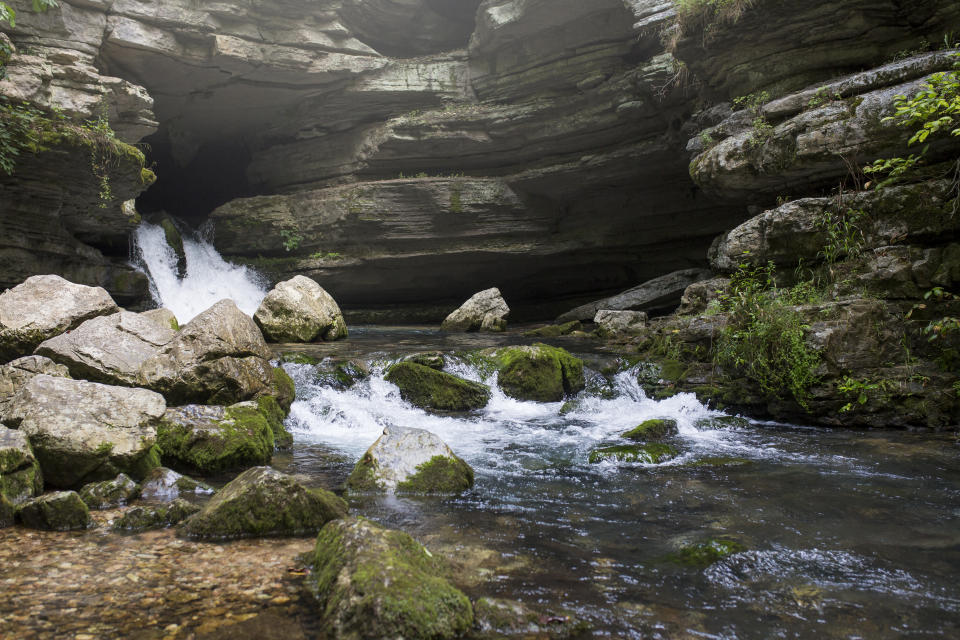
Jenniveve84 via Getty Images
6. Blanchard Springs Caverns, Arkansas
Why Visit: Located in the often-overlooked Ozark National Forest, Blanchard Springs Caverns offers a pristine cave environment with stunning formations and a unique underground river that gives this spot a serene, not spooky, feel.
Highlights: The Dripstone Trail features stunning formations such as the Giant Flowstone and the Cathedral Room. The Discovery Tour delves deeper into the cave’s geological history and includes a visit to the underground river.
Interesting Fact: Blanchard Springs Caverns is a “living” cave, meaning it is still actively forming new formations through the continuous deposit of minerals.

Kartchner Caverns (Wikimedia Commons)
7. Kartchner Caverns, Arizona
Why Visit: Discovered in 1974, Kartchner Caverns is a relatively young cave in terms of public access. It features well-preserved formations and an extensive network of tunnels and chambers.
Highlights: The Rotunda/Throne Room Tour offers a look at the spectacular 21-foot-tall Kubla Khan formation. The Big Room Tour, available seasonally, showcases delicate soda-straw formations and gravity-defying helictites.
Interesting Fact: Kartchner Caverns remained a closely guarded secret for over a decade to protect its pristine condition before being developed into a state park.
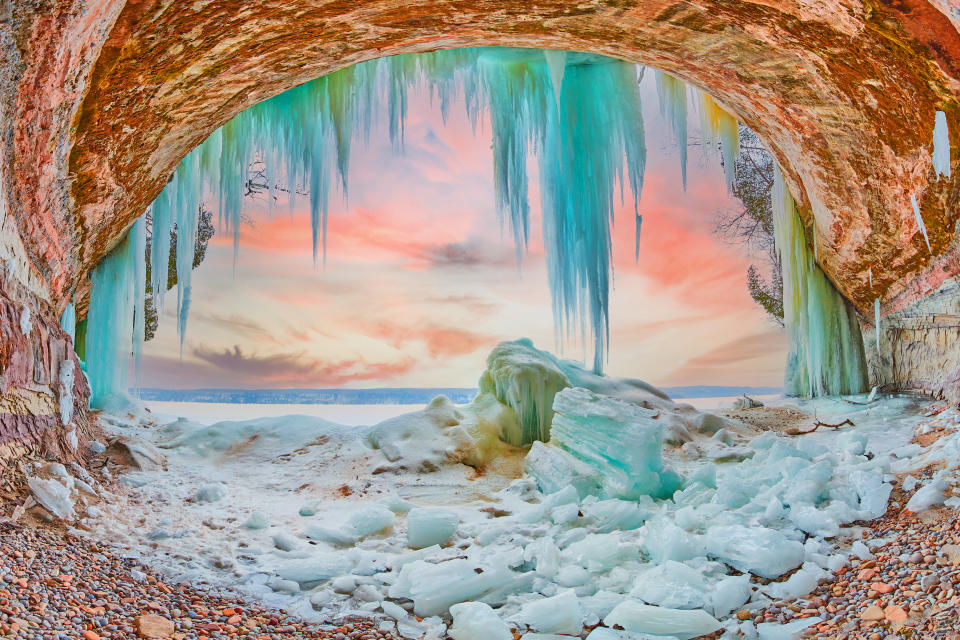
Nicholas Klein via Getty Images
8. Honorable mention: the ice caves of Lake Michigan
The ephemeral ice caves of Lake Michigan draw adventurers and photographers alike to Lake Michigan’s icy shores each winter. Appearing along the lake’s coastline, particularly in areas like Pictured Rocks National Lakeshore and Michigan’s Upper Peninsula, these temporary wonders are formed by the lake’s relentless wind and waves. As the cold air interacts with the warmer lake water, intricate ice caves, arches, and tunnels take shape, creating a frozen landscape that seems almost otherworldly. Their beauty is fleeting, of course, lasting only as long as the very cold temperatures persist. Once the weather begins to warm, these icy structures melt away, making the ice caves a rare and magical sight that can only be experienced for a short period each year. You’ll have to keep an eye on local updates to time your visit right.

Jacqueline is a travel, nature, and science writer based in Wisconsin. Follow her work on Yahoo Creators—or find it in the wild at publications like National Geographic, Smithsonian, Travel + Leisure, and more.
Source link : http://www.bing.com/news/apiclick.aspx?ref=FexRss&aid=&tid=66cde5e1d57e4743b4bebfb3fcb9642f&url=https%3A%2F%2Fwww.yahoo.com%2Flifestyle%2Fstory%2Fjourney-into-darkness-these-are-americas-most-fascinating-caves-135106446.html&c=13790122433925077930&mkt=en-us
Author :
Publish date : 2024-08-27 02:55:00
Copyright for syndicated content belongs to the linked Source.

